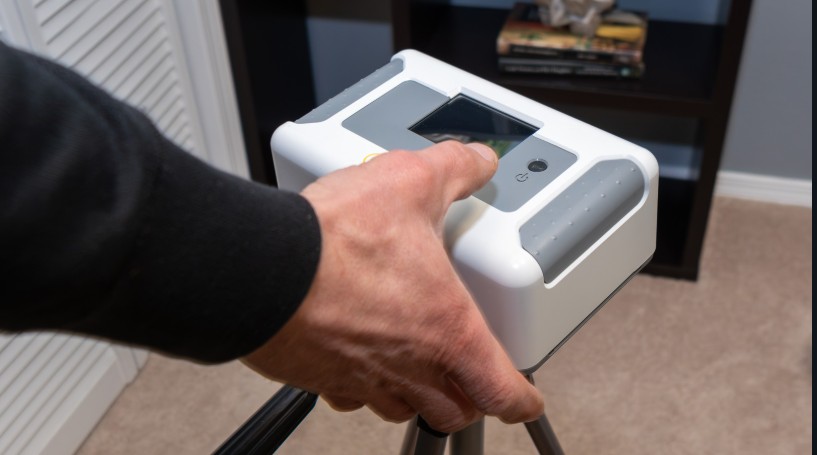Purchasing a home is one of the most significant investments anyone can make. As a home inspector, your role is to ensure that potential buyers are aware of any potential hazards in their new home. One crucial yet often overlooked aspect of this process is radon testing. Radon, a colorless and odorless radioactive gas, poses significant health risks, and ensuring your clients are protected from it is not just a professional duty—it’s a moral obligation.
What Is Radon and Why Should You Care?
Radon is a naturally occurring radioactive gas produced by the decay of uranium in soil, rock, and water. While it is harmless in low concentrations, radon becomes dangerous when it accumulates inside buildings, particularly homes. Prolonged exposure to high radon levels can lead to severe health problems, including lung cancer.
According to the Environmental Protection Agency (EPA), radon is the second leading cause of lung cancer in the United States, responsible for an estimated 21,000 deaths annually. This staggering statistic alone underscores the importance of radon testing in home inspections.
The Science Behind Radon Accumulation
Radon enters homes through:
- Cracks in walls and floors
- Construction joints
- Gaps around service pipes
- Crawl spaces and sump pumps
Once inside, radon can become trapped and build up to dangerous levels, especially in energy-efficient homes where ventilation is limited. Homes of all types—new or old, with or without basements—are susceptible.
Why Home Inspectors Should Prioritize Radon Testing
1. Health Risks Cannot Be Ignored
Radon exposure poses a severe health risk to homeowners and their families. Testing for radon demonstrates your commitment to their safety and well-being.
2. Legal and Ethical Responsibilities
In some states, radon testing is required as part of a home inspection. Even in areas where it’s not mandated, offering radon testing as a service reflects your professionalism and ethical responsibility.
3. Increased Credibility and Trust
By providing radon testing, you establish yourself as a thorough and trustworthy home inspector. Clients are more likely to recommend your services when they see you going above and beyond to protect their interests.
The Radon Testing Process: What Home Inspectors Need to Know
Radon testing is straightforward, but accuracy and reliability are critical. Here’s how you can ensure effective testing:
1. Understand the Equipment
There are two main types of radon testing devices:
- Passive devices (charcoal canisters, alpha track detectors) do not require power and are left in the home for a set period.
- Active devices (continuous radon monitors) require power and provide real-time measurements.
2. Proper Placement of Test Kits
Place test kits in the lowest livable area of the home, away from windows, doors, and vents. Avoid placing them in kitchens or bathrooms where humidity can affect results.
3. Follow EPA Guidelines
Ensure the home remains closed (except for normal entry and exit) for at least 12 hours before and during the test. Conduct tests over a minimum of 48 hours for accurate readings.
4. Understand the Results
Radon levels are measured in picocuries per liter (pCi/L). The EPA recommends mitigation for levels at or above 4.0 pCi/L. Be prepared to explain the results to your clients and guide them on the next steps if mitigation is needed.
Common Myths About Radon Testing
Myth 1: Only Older Homes Have Radon Problems
Radon can affect homes of all ages, designs, and locations. Testing is the only way to know if a home has high radon levels.
Myth 2: Homes Without Basements Are Safe
Radon can enter through any part of the home in contact with the ground, including crawl spaces and slabs.
Myth 3: Radon Testing Is Expensive
Radon testing is affordable, especially compared to the potential medical costs of lung cancer treatment.
Mitigation: What Happens If Radon Levels Are High?
If radon levels are elevated, homeowners can take steps to reduce them. Common mitigation methods include:
- Installing a vent pipe system and fan to draw radon from beneath the home and release it outside.
- Sealing cracks and openings in the foundation.
- Increasing ventilation to reduce radon concentration.
Professional mitigation systems can lower radon levels by up to 99%, making the home safe for occupants.
How Offering Radon Testing Benefits Your Business
Adding radon testing to your list of services can:
- Increase revenue by providing an in-demand service.
- Differentiate your business from competitors.
- Enhance customer satisfaction by addressing a critical safety concern.
How to Educate Your Clients About Radon
As a home inspector, you have the opportunity to educate clients about the risks of radon. Provide them with informational brochures, explain the testing process, and emphasize the importance of addressing elevated radon levels promptly.
Conclusion
Radon testing is not just a value-added service for home inspectors—it is a necessity for protecting homebuyers and their families. By understanding the risks associated with radon, following proper testing procedures, and educating your clients, you can ensure their safety while enhancing your professional reputation.
Take the initiative to include radon testing in your inspections, and you’ll not only meet but exceed the expectations of your clients. Visit Louisville KY Radon Mitigation to learn more about radon testing and mitigation. After all, their health and peace of mind are worth it.




.png)

Comments